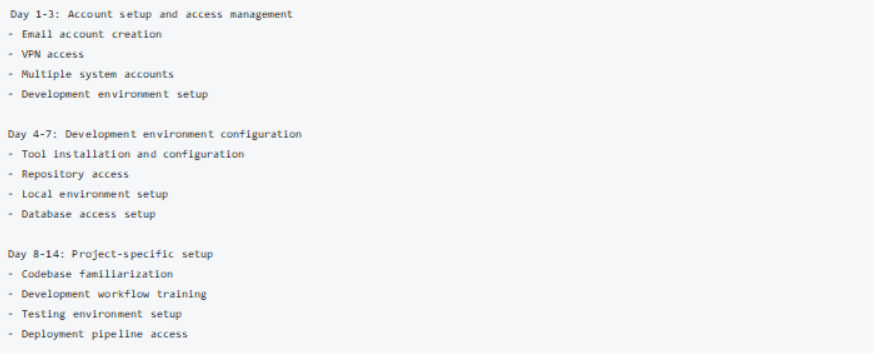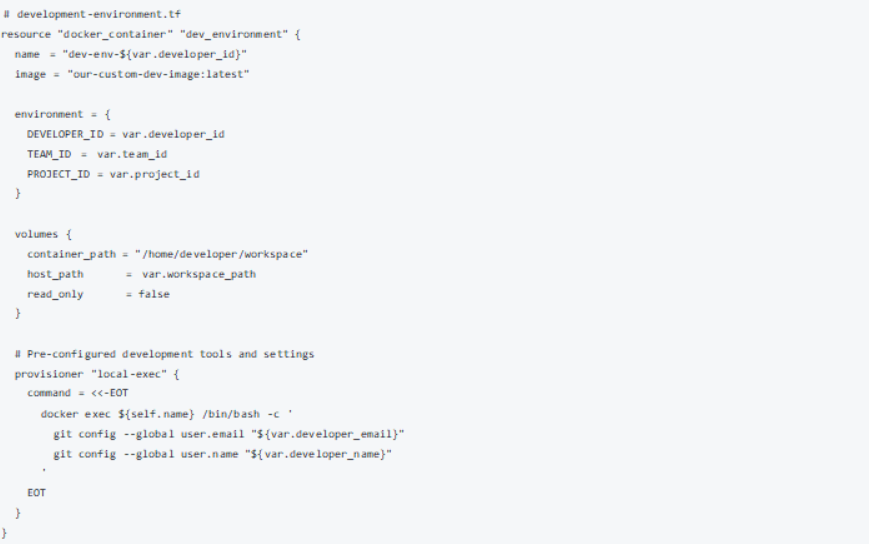
It was a typical Monday morning when our CTO dropped a bombshell: “We’re hiring 50 new developers next quarter.” Our platform team’s immediate reaction? Panic. With our current onboarding process taking two weeks per developer, we were looking at 100 weeks of cumulative onboarding time. Something had to change, and fast.
This is the story of how our platform engineering team transformed our developer onboarding process from a marathon into a sprint, without sacrificing quality or security. More importantly, it’s a blueprint for how other teams can achieve similar results.
The Initial State: Death by a Thousand Manual Steps
Before diving into the solution, let’s paint a picture of where we started. Our onboarding process looked something like this:
Each step required manual intervention from at least one team member, creating bottlenecks and frustration for everyone involved.
The Analysis: Breaking Down the Problem
We started by mapping out every single step in our onboarding process:
Key findings from our analysis:
- 60% of time was spent waiting for approvals
- 30% of setup steps were identical for all developers
- 25% of issues were related to environment inconsistencies 15% of time was spent fixing configuration errors
The Solution: Automation and Self-Service
1. Infrastructure as Code for Development Environments
We created a standardized development environment using Terraform and Docker:
2. Automated Access Management System
We implemented a role-based access control system with automated provisioning:
3. Self-Service Portal
We built a self-service portal that guides developers through the onboarding process:
Implementation Timeline and Challenges
Week 1-2: Foundation
- Set up infrastructure as code
- Created base development environment image
- Implemented basic automation scripts
Week 3-4: Access Management
- Developed role-based access control system
- Automated approval workflows
- Implemented audit logging
Week 5-6: Self-Service Portal
- Built user interface
- Integrated automation scripts
- Added progress tracking
Week 7-8: Testing and Refinement
- Pilot testing with new hires
- Feedback collection and adjustments
- Documentation and training
Key Metrics and Results
Before and After Comparison:
Lessons Learned
What Worked Well
- Standardized Environments: Creating a standardized development environment eliminated inconsistencies and reduced support needs.
- Automation with Verification: Each automated step includes verification to ensure successful completion:
3. Progressive Access: Instead of granting all access at once, we implemented a progressive access system:
What Could Be Improved
- Better Error Handling: We needed to improve error messages and recovery procedures:
2. More Flexible Configuration: Some teams needed customized configurations:
Current State and Future Plans
Ongoing Improvements
- AI-Assisted Onboarding: We’re implementing an AI assistant to help with common questions:
2. Enhanced Monitoring: We’re adding better monitoring of the onboarding process:
Recommendations for Other Teams
- Start with Analysis: Document every step in your current process before making changes.
- Automate Incrementally: Start with the most time-consuming and error-prone steps first.
- Build in Feedback Loops: Create systems to constantly gather and act on feedback:
Conclusion
Reducing onboarding time from two weeks to two hours wasn’t just about automation – it was about rethinking the entire process from the ground up. The key was breaking down the problem into manageable pieces and addressing each with a combination of automation, self-service and careful monitoring.
For teams looking to undertake a similar transformation, remember that the goal isn’t just speed – it’s creating a smooth, reliable process that sets new developers up for success. Focus on building systems that are not just fast, but also maintainable, scalable and adaptable to your team’s evolving needs.
The journey doesn’t end here. We’re continuously monitoring, gathering feedback and improving the process. Because in the end, onboarding isn’t just about getting developers set up – it’s about welcoming them to the team and enabling them to do their best work from day one.













